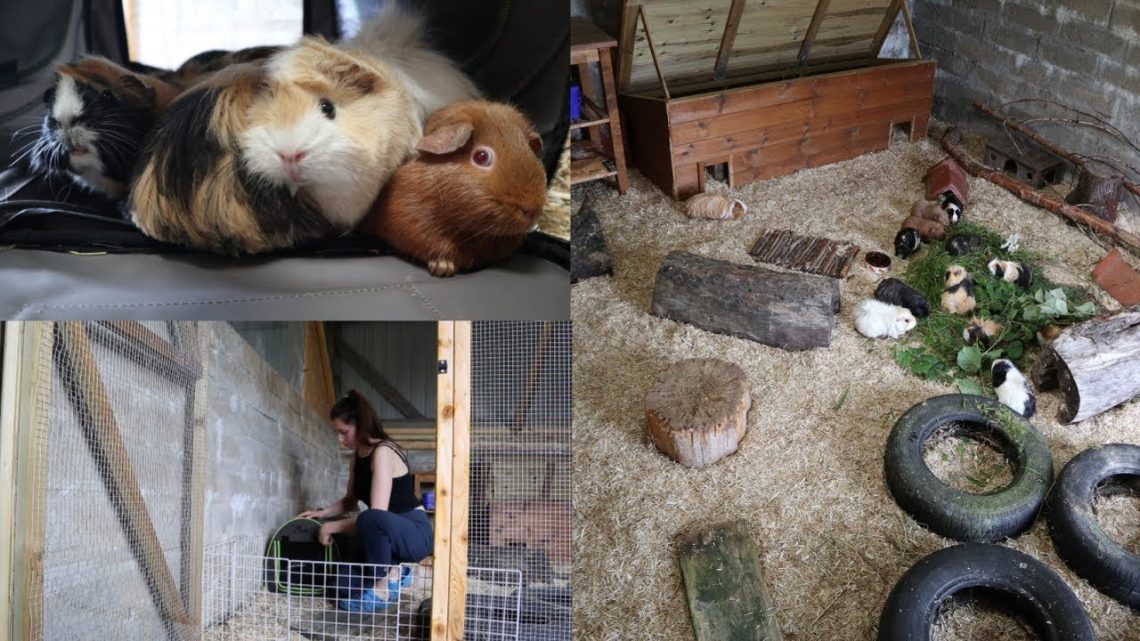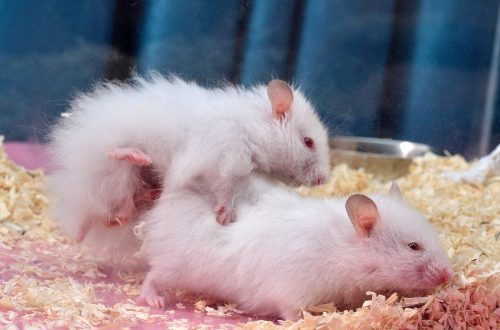
Aviary for guinea pig
If we talk about the summer content of guinea pigs on the street, then we mean, first of all, aviaries (for temporary keeping) or summer houses (for permanent keeping).
If we talk about the summer content of guinea pigs on the street, then we mean, first of all, aviaries (for temporary keeping) or summer houses (for permanent keeping).
Enclosures for guinea pigs
In the summer months, guinea pigs can (and should!) be released onto the grass and fresh air, arranging a temporary aviary in the yard or in the country. Usually, a net is used for this, stretched over pegs driven into the ground (See the article Building a summer aviary for a guinea pig. However, it must be remembered that an aviary constructed in this way, although it prevents the guinea pig from escaping, does not provide it with protection from Dangerous Intruders The main outdoor dangers for guinea pigs are cats, dogs, and birds of prey.
Staying in an open-air cage on the street (especially if it is not covered), the pig should be under constant supervision.
In the summer months, guinea pigs can (and should!) be released onto the grass and fresh air, arranging a temporary aviary in the yard or in the country. Usually, a net is used for this, stretched over pegs driven into the ground (See the article Building a summer aviary for a guinea pig. However, it must be remembered that an aviary constructed in this way, although it prevents the guinea pig from escaping, does not provide it with protection from Dangerous Intruders The main outdoor dangers for guinea pigs are cats, dogs, and birds of prey.
Staying in an open-air cage on the street (especially if it is not covered), the pig should be under constant supervision.
Although guinea pigs originate from South America, heat strokes happen to them – especially with dark-colored individuals. Therefore, a pig in an aviary should have a guaranteed opportunity to hide in the shade, mainly on hot days. It can also not be taken out into the yard when the weather is cold and rainy. And although guinea pigs do not catch colds so easily, the consequences of a cold, if one does happen, can be detrimental.
Although guinea pigs originate from South America, heat strokes happen to them – especially with dark-colored individuals. Therefore, a pig in an aviary should have a guaranteed opportunity to hide in the shade, mainly on hot days. It can also not be taken out into the yard when the weather is cold and rainy. And although guinea pigs do not catch colds so easily, the consequences of a cold, if one does happen, can be detrimental.
Extreme care is also necessary when carrying pigs. These animals are not particularly dexterous, and they can be severely injured as a result of a fall. Often it even ends in death.
When taking an animal out of its cage, always use both hands to support its torso from below with your fingers. Never grab a guinea pig by the fur around its neck (like a rabbit) or by its leg, because compared to the rest of its body, it has very fragile limbs. Always protect the pig from falling; falling from a height, it can cause serious damage to itself. Children, when carrying an animal, must use the palms of both hands for this and are obliged to put the pig on their chest with all its four paws at the same time. However, it is best to use a basket with appropriately high edges to prevent the animal from falling out of it.
Children should also be taught in detail that holding a guinea pig close and squeezing it like a teddy bear is not safe for the guinea pig. Too strong hugs can end tragically for the animal. A guinea pig, unlike a dog, is defenseless in the face of rough and cruel treatment.
Extreme care is also necessary when carrying pigs. These animals are not particularly dexterous, and they can be severely injured as a result of a fall. Often it even ends in death.
When taking an animal out of its cage, always use both hands to support its torso from below with your fingers. Never grab a guinea pig by the fur around its neck (like a rabbit) or by its leg, because compared to the rest of its body, it has very fragile limbs. Always protect the pig from falling; falling from a height, it can cause serious damage to itself. Children, when carrying an animal, must use the palms of both hands for this and are obliged to put the pig on their chest with all its four paws at the same time. However, it is best to use a basket with appropriately high edges to prevent the animal from falling out of it.
Children should also be taught in detail that holding a guinea pig close and squeezing it like a teddy bear is not safe for the guinea pig. Too strong hugs can end tragically for the animal. A guinea pig, unlike a dog, is defenseless in the face of rough and cruel treatment.
Summer house for guinea pig
If the summer is warm, then you can keep the guinea pig outside all the time, but this will require a special room – a summer house, which must meet special conditions. First of all, the summer house must be protected from the influence of adverse atmospheric factors. In addition, it should be inaccessible to dogs and cats living nearby.
A summer house for guinea pigs standing in the yard is usually a wooden box with double walls, the space between which is filled with insulating material (polystyrene foam or other material with similar properties). The roof is covered with tar paper to provide protection from the rain. The bottom should be a drawer that allows cleaning.
Outside, all wooden surfaces must be impregnated (impregnated) with a wood preservative that provides protection from decay and pests. This cannot be done from the inside, so as not to poison animals that love to gnaw wood.
The inflow of air and access to light is provided by the entrance door in the form of a wooden frame, covered with a strong metal mesh. At night and during periods of adverse weather conditions, it is imperative to hang a curtain of fabric on it, for example, burlap, which, without retaining air, will contain the influx of moisture.
If the summer is warm, then you can keep the guinea pig outside all the time, but this will require a special room – a summer house, which must meet special conditions. First of all, the summer house must be protected from the influence of adverse atmospheric factors. In addition, it should be inaccessible to dogs and cats living nearby.
A summer house for guinea pigs standing in the yard is usually a wooden box with double walls, the space between which is filled with insulating material (polystyrene foam or other material with similar properties). The roof is covered with tar paper to provide protection from the rain. The bottom should be a drawer that allows cleaning.
Outside, all wooden surfaces must be impregnated (impregnated) with a wood preservative that provides protection from decay and pests. This cannot be done from the inside, so as not to poison animals that love to gnaw wood.
The inflow of air and access to light is provided by the entrance door in the form of a wooden frame, covered with a strong metal mesh. At night and during periods of adverse weather conditions, it is imperative to hang a curtain of fabric on it, for example, burlap, which, without retaining air, will contain the influx of moisture.
When assembled, all this is installed on four wooden supports. They must be well impregnated, otherwise they will quickly rot and decay. It is recommended to use supports with a length of about 1,7 m, of which about 50 cm should be dug into the ground. This will provide the required massiveness and stability of the structure.
There should always be enough hay in the summer house. The temperature inside should not be allowed to drop below 5°C. Even more detrimental than the cold for guinea pigs are large fluctuations in temperature. Therefore, during cold weather, they cannot be transferred from a cold house standing in the yard to a warm dwelling and back from heat to cold.
Summing up, I would like to note that guinea pigs are, first of all, pets, you can only keep them outside in warm summer! The rest of the time – only at home!
When assembled, all this is installed on four wooden supports. They must be well impregnated, otherwise they will quickly rot and decay. It is recommended to use supports with a length of about 1,7 m, of which about 50 cm should be dug into the ground. This will provide the required massiveness and stability of the structure.
There should always be enough hay in the summer house. The temperature inside should not be allowed to drop below 5°C. Even more detrimental than the cold for guinea pigs are large fluctuations in temperature. Therefore, during cold weather, they cannot be transferred from a cold house standing in the yard to a warm dwelling and back from heat to cold.
Summing up, I would like to note that guinea pigs are, first of all, pets, you can only keep them outside in warm summer! The rest of the time – only at home!





